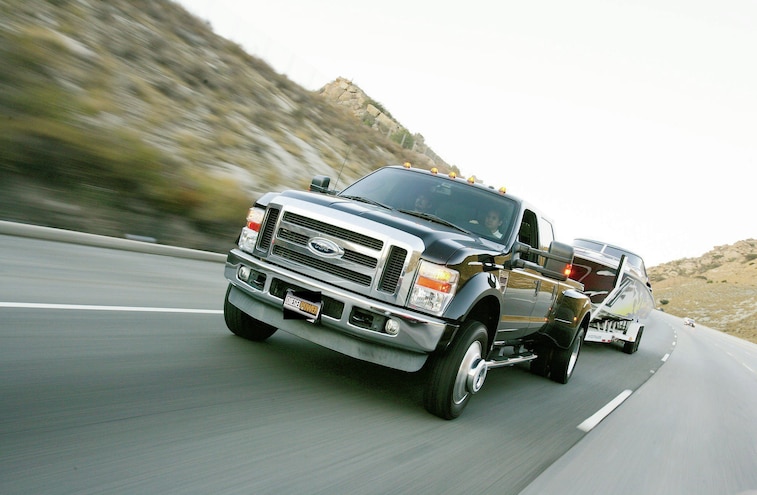JLR has a long way to go on powertrains.
2020 Land Rover Range Rover Sport PHEV Review: Driving Issues Impossible to Overlook
The verdict: A sumptuous cabin can’t make up for finicky touchscreen controls and an awful hybrid driving experience. .......
....The idea is sound: Combine a 296-horsepower, turbocharged 2.0-liter four-cylinder engine with a 141-hp electric motor housed in the eight-speed automatic transmission, all powered by a 13.1-kilowatt-hour lithium-ion battery pack. ......
....It all sounds great on paper. The problem is, none of it works very well. ....
.....The big problem is the smoothness of operation of these systems. The gas engine kicks on sometimes but not others, and it’s far from seamless when it does. The four-cylinder Ingenium engine shakes and vibrates like a diesel instead of a turbocharged gasoline engine. Running idle at a stoplight, it shakes the whole SUV. Acceleration feels variable, meaning the powertrain behaves differently depending on what mode the Range Rover decides it needs to be in. Pushing the accelerator the same way twice does not guarantee the same acceleration: Sometimes it provides a serious boost, sometimes it just crawls away from stoplights. And sometimes the gas engine kicks in despite EV-only mode being selected, even if you attempt to accelerate gently to try and keep it in electric. .....
.....The braking system doesn’t behave any better. The brakes have an artificial, unpredictable feel, with regenerative action meant to put energy back into the batteries. Again, though, braking feel and performance varies depending on whether the engine is running or not, which doesn’t make much sense to me. Coming to a slow-speed halt always ended with an abrupt lurch as the brakes suddenly grabbed. ......
.....Despite being made almost entirely of aluminum, the SUV weighs 5,430 pounds — significantly more than the next lightest version of the Range Rover Sport, the 5,100-pound V-8 model. Batteries and electric drive systems add a lot of weight to a vehicle, and the biggest problem hybrids face is that they basically have two full powertrains to lug around. ........"
Here we see a 'production' vehicle that has undergone the same testing regime as the Defender. How did this get out the door? Which is why I don't consider first or even second year models.
2020 Land Rover Range Rover Sport PHEV Review: Driving Issues Impossible to Overlook
The verdict: A sumptuous cabin can’t make up for finicky touchscreen controls and an awful hybrid driving experience. .......
....The idea is sound: Combine a 296-horsepower, turbocharged 2.0-liter four-cylinder engine with a 141-hp electric motor housed in the eight-speed automatic transmission, all powered by a 13.1-kilowatt-hour lithium-ion battery pack. ......
....It all sounds great on paper. The problem is, none of it works very well. ....
.....The big problem is the smoothness of operation of these systems. The gas engine kicks on sometimes but not others, and it’s far from seamless when it does. The four-cylinder Ingenium engine shakes and vibrates like a diesel instead of a turbocharged gasoline engine. Running idle at a stoplight, it shakes the whole SUV. Acceleration feels variable, meaning the powertrain behaves differently depending on what mode the Range Rover decides it needs to be in. Pushing the accelerator the same way twice does not guarantee the same acceleration: Sometimes it provides a serious boost, sometimes it just crawls away from stoplights. And sometimes the gas engine kicks in despite EV-only mode being selected, even if you attempt to accelerate gently to try and keep it in electric. .....
.....The braking system doesn’t behave any better. The brakes have an artificial, unpredictable feel, with regenerative action meant to put energy back into the batteries. Again, though, braking feel and performance varies depending on whether the engine is running or not, which doesn’t make much sense to me. Coming to a slow-speed halt always ended with an abrupt lurch as the brakes suddenly grabbed. ......
.....Despite being made almost entirely of aluminum, the SUV weighs 5,430 pounds — significantly more than the next lightest version of the Range Rover Sport, the 5,100-pound V-8 model. Batteries and electric drive systems add a lot of weight to a vehicle, and the biggest problem hybrids face is that they basically have two full powertrains to lug around. ........"
Here we see a 'production' vehicle that has undergone the same testing regime as the Defender. How did this get out the door? Which is why I don't consider first or even second year models.
Last edited:


 , is the rest worth watching? Or any fav eps?
, is the rest worth watching? Or any fav eps?

